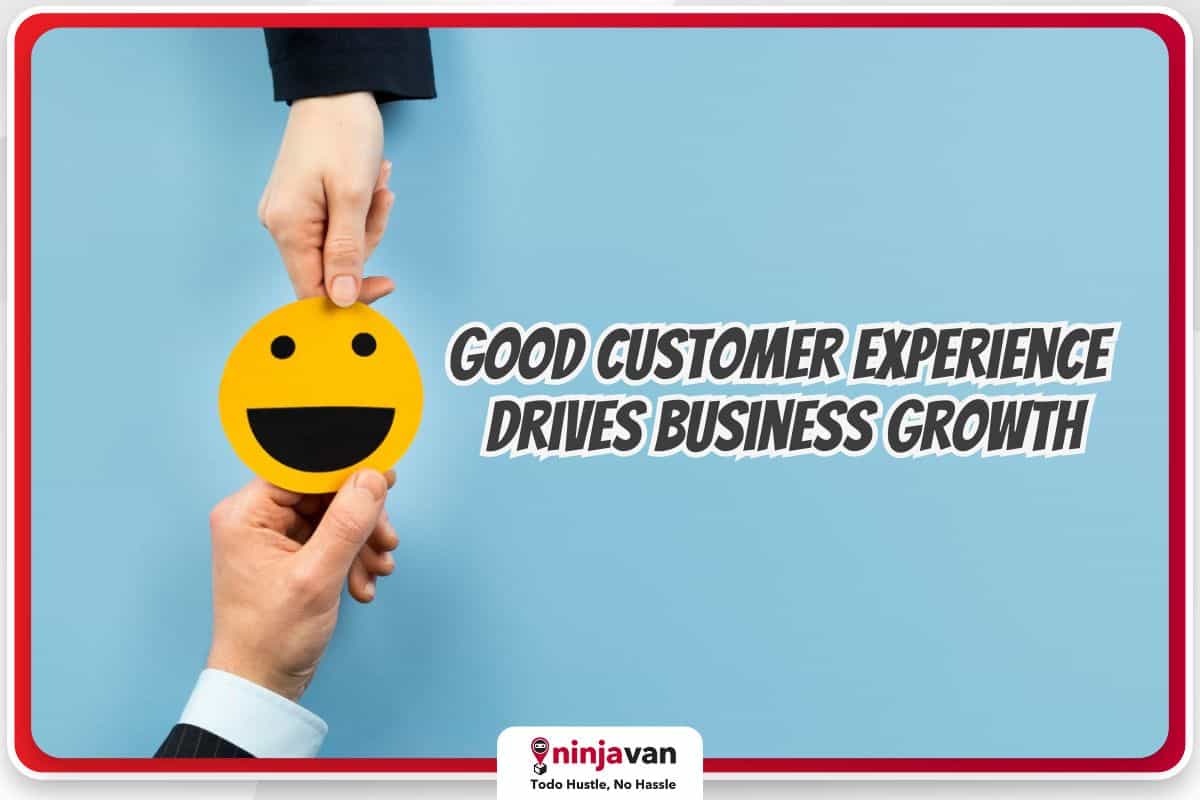Social media marketing is a stepping-stone for any digital marketing strategy, particularly for small business owners.
The 2021 report by DataReportal reveals that social media ads are the highest source (50.2 percent) of brand and product discovery among Filipino consumers.
Quite simply, a good social media marketing strategy can attract customers, increase sales and build a brand’s or seller’s credibility.

If you’re enjoying good business because of your social media efforts, well done! However… marketing for your business doesn’t and shouldn’t end there.
Social media marketing is just one part of digital marketing strategy

The reach and engagement that brands can get from Instagram, Twitter, and Facebook marketing are undeniable, but they’re not enough to drive meaningful growth.
Thousands of followers, shares and likes can boost a brand’s popularity, but they don’t guarantee sales. And even though ads and photos on social media can lure impulse buyers, customers still have to click on an external link — ideally your website — to complete their purchase.
Social media can work alone, but that doesn’t mean it should go solo. There is an entire ecosystem of digital marketing strategies and businesses that use them, alongside social media marketing, can reap long-lasting benefits that will fuel their growth.
The importance of digital marketing for ecommerce businesses
What is digital marketing? Digital marketing connects businesses with customers through the Internet. It uses different mediums of digital communication such as emails and social media platforms. It uses strategies like search engine optimization (SEO) and pay-per-click advertising (PPC), both of which can boost a store’s visibility online.
Collectively, these efforts can amplify the reach of ecommerce businesses and attract customers who are not active on social media.
Digital marketing strategies for ecommerce
What is a digital marketing strategy? It is a plan to utilize certain methods and techniques to achieve specific business goals. It can be overwhelming for first-timers because there are many strategies to consider. The key is to understand the purpose of each one so that you can decide where to focus your time and budget, if necessary.

Here’s what Pinoy online sellers and ecommerce businesses need to do to get started with digital marketing.
1. Create a website
A website is crucial to digital marketing because all strategies you apply will touch on, if not revolve, around your website:
- You can only do SEO if you have a website.
- You will get a yourbrand.com domain or URL, which consumers see as a sign of legitimacy.
- It’s easier to promote your brand beyond social media when you have a customized domain instead of just a Shopee or Lazada store.
Lead generation strategies, like ads, also require a website. If people click on an ad that leads to nowhere, that’s a lot of missed opportunities! Instead, you must redirect them to a landing page on your website: a page you designed to take visitors to the next step of the conversion funnel.
Other benefits of having a website:
- You have control over your brand image and marketing message.
- You can keep the focus on your products and prevent customers from getting sidetracked by the ads of your competitor shops.
- Websites build credibility. Online customers trust sellers whose websites look and feel professionally done.
2. Optimize your website (through SEO)
So you have a website. It looks wonderful, navigates smoothly, and is updated with your products. But can your customers find it?
This is why you need SEO. It’s a collection of techniques that will make Google rank your website as the most relevant result for searches.
For example, if you bought a brown milk tea franchise in Makati, you’ll want to appear first when people look for “brown sugar milk tea in Makati.”
SEO specialists optimize your website so that it appears first among the hundreds, if not thousands, of competitor sites. Why aim for first place? Because Rank 1 gets 28.5 percent of clicks, which is roughly three out of 10 Google search users. Second place only gets 15.7 percent of clicks; third place gets 11 percent, all the way down to 2.5 percent for the tenth place.

SEO in digital marketing is the key to promoting your brand and products beyond social media.
- It helps your business reach audiences who are inactive or don’t have social media accounts.
- It’s an effective tool for passive marketing so that you keep attracting visitors and customers even as you sleep.
3. Make your website mobile-friendly
Seventy-two percent of Filipinos used mobile Internet in 2020; and in 2021, the average mobile internet usage among 16 to 64-year-olds is five hours and 45 minutes. The Philippines has entered the mobile age, and your website should be equipped for it.
When a website is mobile-friendly, its layout, images, text, and other on-page elements adjust accordingly so that visitors can comfortably view and navigate its pages on a much smaller screen, like a phone or tablet.
Consider your own experience when browsing websites using your phone. Don’t you hate it when a page takes forever to load? Or you have to zoom in to read the page content? If your instinct is to leave such problematic websites, trust that your visitors will do the same.
Mobile optimization goes hand-in-hand with SEO to ensure that your ecommerce site ranks high in the search results whether customers search on laptops or on their phones.
4. Create a blog
One essential step in SEO is keyword research. It is the process of identifying words and phrases that online shoppers use when looking for things to buy (e.g., “study desks for sale,” “Korean bbq in Pasay”).
Once you have this list of priority keywords, what’s next is incorporating these terms into your website. This means inserting keywords in the page title, section subheader and content.
Blogging is an excellent way to introduce keywords you haven’t previously used on your website. If you developed a new product line, for example, you can write several blogs optimized with keywords and phrases that are relevant to your new products.
Blogging can also:
- Increase your website traffic.
- Send leads to your product pages or transaction pages (via internal linking).
- Establish your brand identity.
- Build your brand’s credibility.
4. Launch paid ads (PPC or pay-per-click advertising)
If you have paid ads on social media, PPC should be easy to understand.
Social media advertising is just one of the many types of PPC advertising. PPC is designed to optimize your budget by generating clicks and impressions for every peso spent.

These are the main characteristics of PPC:
- You only pay the ad fee when someone clicks on your ad.
- You set a budget; you won’t overspend unless you add more funds to a campaign.
- You can identify a target audience and show your ads to those people only.
There are two types of PPC ads you need to consider:
- Paid Search – Bid on ad placements in the SERPs. These are the “sponsored ads” that you can find at the top, middle, and bottom of the search results pages.
- Display Advertising – Bid on ad placements on third-party sites. These ads may appear at the top, side, middle, or bottom banners of websites that are relevant to your niche or frequented by your target demographic.
A combination of these PPC ads makes your products visible to target audiences outside of social media.
6. Create engaging videos
Video content has enjoyed heavy consumption in the past few years and increased further during the pandemic. 96% of consumers say they started watching more videos since COVID-19 started. Early data also shows that 87% of Filipinos watch videos online.
Funny, heart-wrenching and unique advertisements catch consumers’ attention. Similarly, engaging and memorable videos with effective messaging also do wonders for an ecommerce brand.
Another advantage of video marketing is you can publish the videos on your website, share them on social media, and use them for video ads. Unless you make videos specifically for an occasion, you can repurpose them for future marketing campaigns.
7. Engage in email marketing
Email marketing may sound ancient in the face of social media marketing, but it still offers great value as a lead generation tool.
Email marketing can turn casual visitors into loyal and repeat customers. Conversions from paid ads are often immediate, and that’s good for your bottom line. However, lead generation efforts that only attract one-time buyers don’t promote growth and longevity.

Through email marketing, you can inform your loyal customers when you have new products, open international deliveries, or offer perks like free shipping and exclusive discounts. You also enjoy long-term benefits that can help grow your business:
- A strong B2C relationship.
- High ROI.
- Raise brand awareness.
- A reliable source of customer feedback.
- A channel for discovering new sales opportunities.
When to hire a digital marketing agency
Do you need to hire a digital marketing agency? The simple answer is yes. Hiring a digital marketing agency is a must if:
- You don’t have a dedicated marketing team for your ecommerce business. Digital marketing in the scope and scale that we described above is a full-time job for more than one person.
- It is your first time engaging in any form of digital marketing.
- You want to see positive results as quickly as possible.
- You need to generate leads and returns as soon as possible.

“I want to save money and do some of the work myself, is this possible?”
Definitely… but not right away. It takes time and effort to master the strategies mentioned above and execute them well enough to generate good results.
You don’t call a plumber to do repairs on your car. In the same vein, you can’t expect a traditional sales and marketing rep to be an expert in digital marketing overnight. You run the risk of wasting money on a sloppy campaign that generates minimal returns.
If you’re going to do digital marketing anyway, do it the best way possible. Hire a digital marketing agency that knows what to do with your money.
As you’re considering investing in a digital marketing strategy, it’s possible that your competitors are thinking it, too. Start digital marketing for your ecommerce business as quickly as possible and beat your competition.







